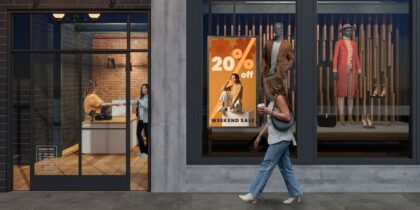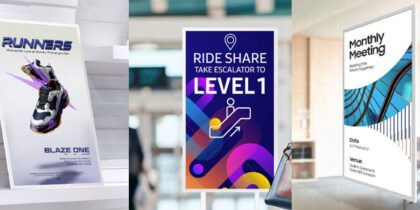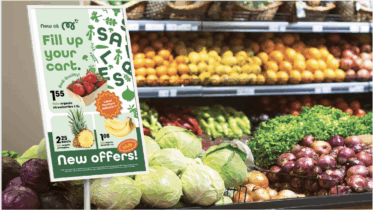Millennial shopping habits are driving retailers to adapt their store environments to create more personalized, seamless experiences fueled by technology. While beacons and wearables are top technology trends for retail associates, mobile remains the single most important way to engage millennials. Nielsen reports that over 85 percent of U.S. millennials between the ages of 18-24 own a smartphone. They’re increasingly using mobile in the retail environment to browse and research products, order online, pick up in-store and even pay at the point-of-sale with mobile wallets.
Retailers need to take advantage of the increased popularity of mobile by creating robust mobile apps that enable millennials to shop how, where and when they want. A survey of 1,600 millennials by Forbes found that nearly half of respondents have downloaded a mobile shopping app. More than half said they liked using the apps because they created a better shopping experience, and more than a quarter said they used thes apps to take advantage of sales and discounts.
Despite their affinity for technology, 82 percent of millennials still prefer the brick-and-mortar experience, according to a report by Accenture. But while millennials enjoy browsing the aisles and seeing products in person, they’re also more likely to use their phones in the store to research products and compare prices with other retailers. Therefore, retailers should leverage mobile technology both inside and outside the store to create a rich customer experience across all channels.
Providing Consumers With Innovative Mobile Experiences
While large retailers such as Home Depot and Target are meeting the challenge with robust, functional apps that win customers, many retailers are lacking. According to Julie Ask, vice president and principal analyst of e-business and channel strategy at Forrester Research, even many teen retailers haven’t invested enough in mobile. Many of these brands, Ask told AdAge, “have fairly early-stage, simple mobile experiences [and] most aren’t ready to tackle this.”
The retailers that are ready are the ones experimenting with new ways to leverage mobile apps to spark sales. For example, according to Adweek, beauty brand Sephora is driving mobile sales with new features that use augmented reality to make the shopping and decision-making process easier. Their “swipe it, shop it” feature allows users both in the store and at home to select and combine makeup products and create the look they desire. Deborah Yeh, senior vice president of marketing and brand at Sephora, says that the mobile platform aims to create a digital experience to supplement the products. “We’re trying to create these really fun, addictive shopping experiences … the full, 360-[degree] retail and digital experience in addition to that product,” she says. “This is an example of not just having a marketing campaign, but thinking about a full client experience.”
According to Internet Retailer 2016 Mobile 500, other retailer apps that are popular with consumers include REI, Overstock.com and Urban Outfitters. Brad Brown, senior vice president of digital development at REI, says that the company is focusing more on the “mobile moments” that customers experience while in-store. Brown says REI views digital more as a “stepping stone” to in-store sales rather than a final channel. The company leverages its trusted brand image through the app, along with expertise, free guides and tips for outdoor activities.
Adapting Retail for a New Generation of Shoppers
To learn more about driving retail growth by appealing to millennial shoppers, read the eBook. Download Now
Creating Interactive User Experiences Through Social Marketing
Millennials aren’t just using mobile apps to research products or engage in the shopping process; they’re also using them to share their retail experiences with their peers through social media and online reviews. Therefore, many retailers with stand-out apps are targeting millennials with mobile and social marketing, brand advocacy and experiential commerce. Some examples of retailers with the best mobile campaigns include Best Buy and Saks Fifth Avenue, according to a recent report from Retail TouchPoints.
The need to provide more value through their apps is especially high because retailers are competing with each other for space on millennials’ phones. In a recent study, online coupon site RetailMeNot found that 73 percent of shoppers have two or fewer retail apps on their phones. Billy May, senior vice president of direct-to-consumer, digital and customer marketing at Abercrombie & Fitch, told AdAge that users need to see “increased relevance” to be willing to download an app and give up more space on their phone.
As Rodney Mason, general vice president of marketing at Blackhawk Engagement Solutions, notes in the Retail TouchPoints report, millennial shopping habits are especially important for retailers to heed because they’re fueling shopping trends among all generations. Adapting the retail environment to millennial shoppers calls for retailers to leverage the latest technologies to deliver a customized experience. Winning retailers build that success with a mobile strategy that enhances the digital and physical shopping experience.
Mobile devices can enhance the shopping experience for both consumers and retail associates. Learn how Galaxy tablets are boosting sales and increasing efficiency at specialty retailer, Avenue.









